Yesterday, Mr. P undertook an ambitious culinary project: constructing a terrine de pieds de porc aux herbes.
Let’s begin with nomenclature. Pieds de porc—a phrase that floats off the tongue with rustic elegance—translates, rather devastatingly, to “pig’s feet.” Not to be confused with the quaintly euphemistic pieds de cochon, which the French sometimes use when naming restaurants. English, in its typical pragmatic shrug, calls them pig’s feet or trotters.
A terrine, for those who’ve not been emotionally wounded by one, is a sort of pâté pressed into an earnest-looking ceramic loaf pan. Think meatloaf, but make it Francophone.
I was once suspicious of such dishes, lumping them under the broad category of “questionable textures.” Then came a snowy lunch in the French Alps: two terrines (rabbit and pork) laid before me, no menu, no options. I was starving. I relented. Reader, I devoured. When the server arrived to clear them for the next course, I briefly considered throwing myself across the table in protest. Don’t bother with the stew. I’ve met my match.
So why pig’s feet? Our meat CSA occasionally offers “extras”—a euphemism that could mean organ meats or simply the parts that make you confront the living-ness of animals. This month, the more traditional cuts had been snapped up, so Mr. P returned from the pick-up with jowl, shank, and a frozen bag of what appeared to be—because they were—disembodied hooves. It was like receiving a special delivery from the witch in Hansel and Gretel.
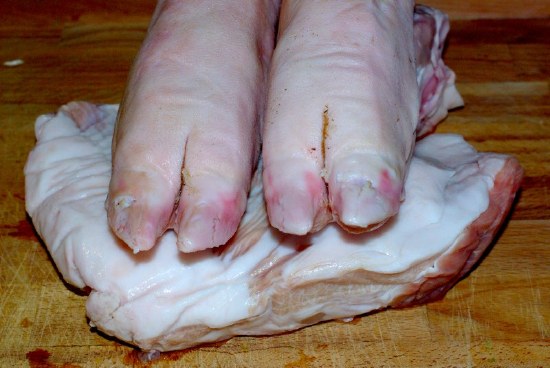
Pig’s feet are reportedly rich in gelatin, which is essential if you’re attempting a terrine that won’t collapse like a metaphor for modern life.
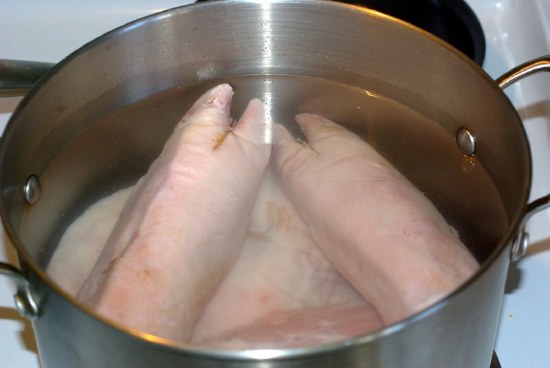
Mr. P, undeterred by their anatomical frankness, did all the work. First, he soaked the feet overnight in salted water—something between a brine and a ritual. Then he boiled them, skimming the foamy byproduct that signals yes, this is how you make the kitchen smell like barn and broth at once.
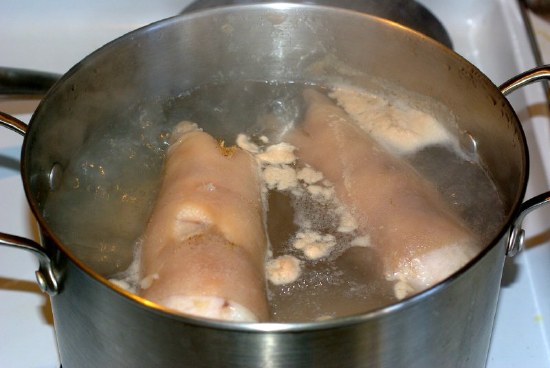
Now, the aromatics. The French, of course, will not make soup without deploying an entire root system: leeks, celery, carrot, garlic. Parsley, tarragon, thyme. And a quantity of wine that feels not unlike bribing the dish to turn out well.
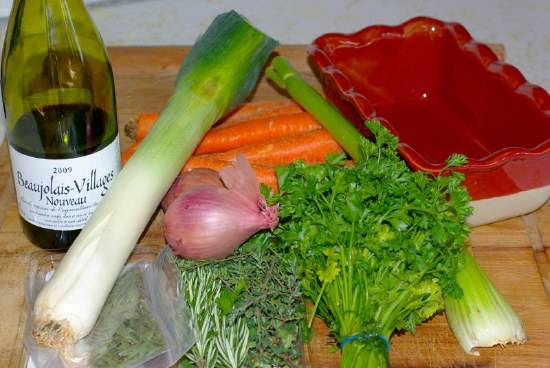
The feet—skinned, split, and singularly fleshy—were the stars. Into the stockpot they went, along with the jowl and shank, to simmer for hours until the meat surrendered.
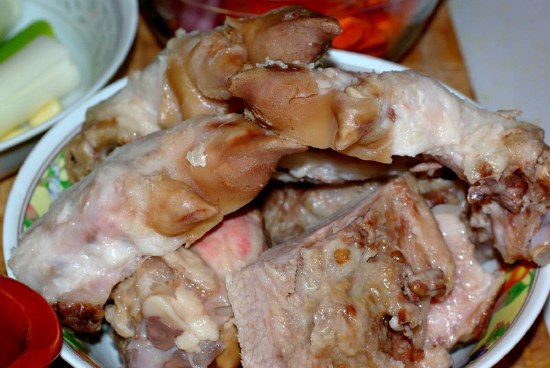
Bones were removed; broth was strained; flesh was seasoned and pressed into the terrine dish with the concentrated cooking liquid.
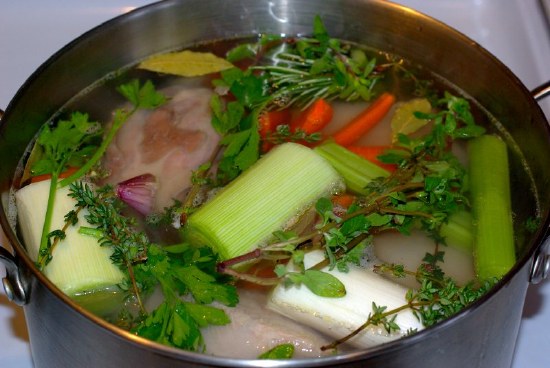
Then came the hardest part: refrigeration. After a night of suspense, we sliced into it. The result? Dense, glistening, richly seasoned.
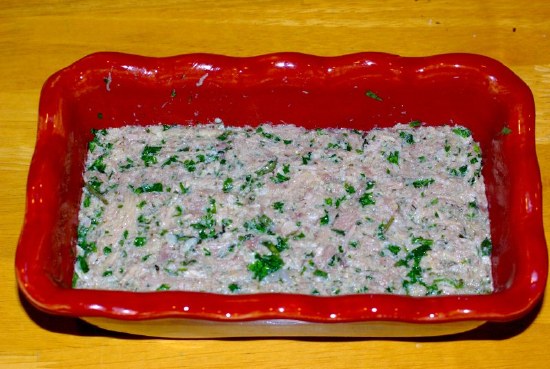
It leaned more rillette than terrine, Mr. P noted—though I lack the technical fluency to argue the point. It was tasty, fatty, shot through with herby depth and a kind of textural assertiveness that tells you gelatin did, in fact, show up.
A triumph. A gelatinous, porcine, oddly beautiful triumph. But let’s not forget where this all began: with the feet. Not figuratively—the actual feet of a fucking pig. Skinned, boiled, and disassembled like a bio lab project, only to reemerge the next day as something you might serve at a wine lunch in Provence.
